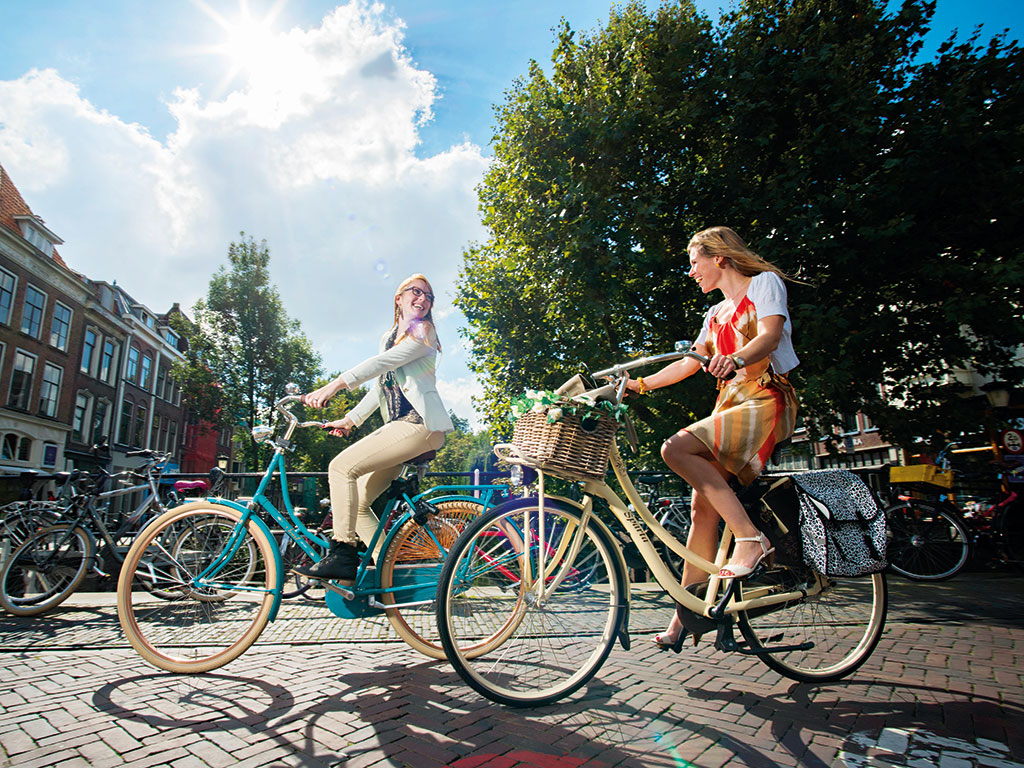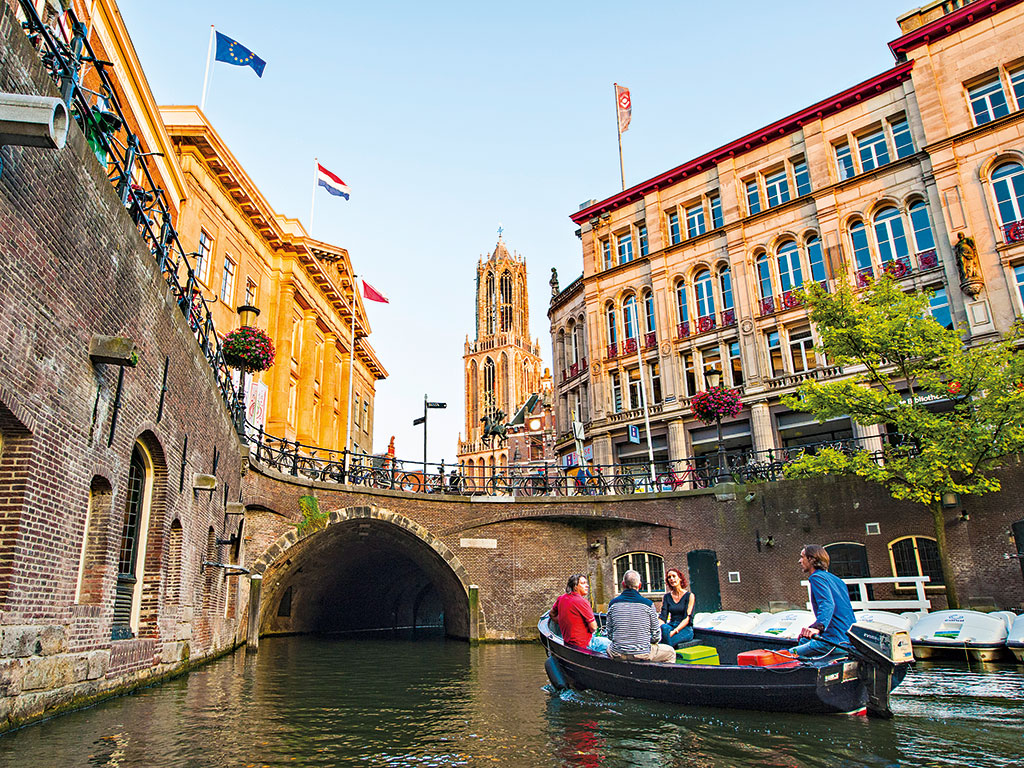Utrecht: where people come to live happy, healthy lives
We speak to officials from the City of Utrecht to find out how the city is managing a growing population and encouraging healthy lifestyles among its citizens

Over 100,000 cyclists use Utrecht’s roads every day. The city's people are some of the healthiest in the world
Utrecht in the Netherlands manages to provide all the benefits afforded by modern urban life, but, unlike other cities, it is also able to offer a healthy living environment within which the mind, body and soul can thrive. As the most competitive region of Europe, it is a place where artists, entrepreneurs and scientists have been collaborating to create a city that not only drives economic growth, but where positive solutions are fostered that improve the lives of its inhabitants and fuel further innovation in the process.
This collaborative approach is exemplified by the Economic Board Utrecht. Its role is to foster strong relationships between business owners, local government organisations and institutions – commonly known as the ‘triple helix’ – with the intention of strengthening the local economy and finding solutions for sustainable improvements to people’s lives.
Utrecht is in the middle of building the largest bicycle parking facility the world has ever seen
Through such collaborative efforts, Utrecht has cultivated a smart, green and above all healthy-living city and region that act as a blueprint for other municipalities around the world to follow. Utrecht has been built on the belief that true economic value comes from having a strong and diverse cross-section of businesses, which work cooperatively to ensure societal challenges are seen as market opportunities to be capitalised upon, rather than as burdens for business. The city attempts to form alliances that focus on three main areas: the development of healthy city living, the transition to a green economy, and offering innovative services to citizens.
Its burgeoning population has allowed Utrecht to thrive economically, but also increased pressure on existing infrastructure. Accommodating such a large population within such a compact space requires careful planning and innovative solutions, which is why the local authorities are forming private partnerships that can hopefully overcome these obstacles.
Utrecht’s ambition is to retain the city’s attractiveness and accessibility by focusing its attention on promoting and facilitating healthy urban living. For city officials, mobility is not the goal in and of itself, but a tool for creating a city where people are proud to live, work, start businesses and meet new people.
The promotion of healthy urban living has been replicated by cities all over the world. In 2014, London chose to invest more than £107m (€150m) in cycling paths and electric transport, while Chicago invested in an online platform for smart mobility. Both these projects relied on the support of companies in the Utrecht region, namely PROOV and RoyalHaskoningDHV for London, and CleverFranke for Chicago.
City of cyclists
With a population of more than 330,000 people – and with 70,000 more expected to make it their home in the coming years – Utrecht is a city with a bright future. A key component to its success has been its ability to transform itself into a ‘city of cyclists’, with over 100,000 riders making their way through its bustling streets and meandering alongside its vast network of canals each and every day.
Cycling is one of the keys to cultivating a healthy urban living environment. It is a secret the Dutch have known for some time and one that has gradually been embraced by other countries around the globe. It offers a healthy, cheap, space-efficient, and, above all, clean alternative to traditional forms of transportation. And, when embraced by enough people, it has the potential to alleviate pressure on existing infrastructure. This is why Utrecht is committed to becoming a world class cycling city and why it plans to build a vast network of high-quality cycle routes and parking facilities that will allow its inhabitants to navigate the bustling city streets with ease. Utrecht already boasts one of the healthiest urban populations in the Netherlands.
So crucial is cycling to the creation of a healthy urban environment that Utrecht is currently in the middle of building the largest bicycle parking facility the world has ever seen. Once completed, this massive three-storey cycle park, which is located on the east side of the city’s central train station, will be capable of housing 12,500 bicycles. If that is not impressive enough, the area around the train station will accommodate a total of 33,000 bikes – helping incorporate the humble bicycle into the heart of the city.
Utrecht made history by becoming the very first city to develop its own referral system for bicycle parking. The system also stands as a testament to the local authorities’ understanding that, for a city to be both liveable and economically robust, it requires the involvement of citizens in the development and design of public spaces.
In autumn 2014, Utrecht made the news due to a malfunctioning traffic light that didn’t want to go green. It caused chaos, leading to a massive bicycle traffic jam that stretched over 100 metres. Always eager to take a proactive approach, the local government asked citizens which traffic lights they thought were redundant and, after expert analysis, a number of useless lights were shut down.
Another example of the city’s pragmatic approach came from a local businessman, Jan-Paul de Beer, owner of innovation agency Springlab, which aims to promote a more active and healthy lifestyle. De Beer noticed lots of frustrated cyclists in the city, so he launched the Happy Biking Project. It involved Springlab employees riding bikes through the city with a GoPro, allowing the team to find out what was causing all the anger and then working with local startups to improve the situation on Utrecht’s roads.
Utrecht’s energy storage schemes and smart grids have also helped establish it as a truly smart city. These innovative solutions allow stored energy to be fed back into the grid. This was made possible through the city’s smart grid project, which involved Europe’s first Vehicle2Grid energy storage system. This smart charging station, which was manufactured by Nissan, is designed to harness solar energy and is capable of charging and discharging electric cars, making it possible for car batteries to supply drivers’ homes with power.

Playful city living
“The truly smart city is a playful city”, said media scholar Dr Michiel de Lange of Utrecht University. By utilising playfulness, citizens are more engaged. Rather than boring people to tears, why not use light-heartedness to get them to connect with the city they call home?
While travelling through the streets of Utrecht, residents and visitors will notice these playful elements. A giant teapot sits on top of the shopping mall Hoog Catharijne, while a UFO rests atop an old brick building near the train station. In the Lange Viestraat, there’s even a rainbow crosswalk aimed at supporting the LGBT community. Playfulness is rooted in the foundations of the city, so it is unsurprising many games are created in Utrecht. In fact, the city is the cradle of the Dutch gaming industry; home to some of the biggest game developers and studios in the world, which are not only responsible for creating amazing video games, but serious gaming applications too, with a focus on using the medium to improve people’s health.
It is this blend of pragmatism and playfulness that has helped the city create a healthy living environment for its citizens and an inspiring and prosperous environment for its businesses and entrepreneurs. The quality of one’s life is of paramount importance to local authorities. Involving residents in key decisions helps breed togetherness, and this will only serve the city well.













